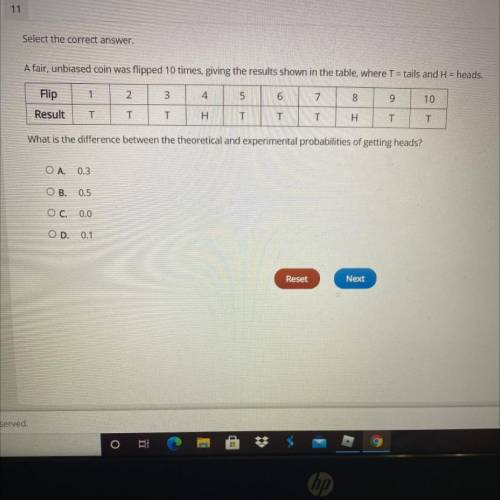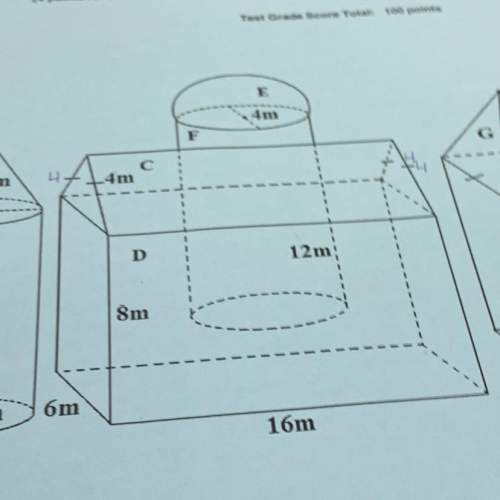
Mathematics, 05.05.2021 22:20 jhony42
A fair, unbiased coin was flipped 10 times, giving the results shown in the table, where T = tails and H = heads.
Flip
1
2
3
4
5
6
7
8
9
10
Result
T
T
T
H
T
T
T
H
T
T
What is the difference between the theoretical and experimental probabilities of getting heads?
OA. 0.3
OB. 0.5
OC. 0.0
OD. 0.1
No


Answers: 3


Another question on Mathematics

Mathematics, 21.06.2019 13:00
1. what are the missing reasons in the proof 2. it's in the second picture and 3
Answers: 1

Mathematics, 21.06.2019 15:30
Planning for the possibility that your home might get struck by lighting and catch on fire is part of a plan for ?
Answers: 1

Mathematics, 21.06.2019 22:30
Abucket of paint has spilled on a tile floor. the paint flow can be expressed with the function p(t) = 6(t), where t represents time in minutes and p represents how far the paint is spreading. the flowing paint is creating a circular pattern on the tile. the area of the pattern can be expressed as a(p) = 3.14(p)^2 part a: find the area of the circle of spilled paint as a function of time, or a[p(t)]. show your work. part b: how large is the area of spilled paint after 8 minutes? you may use 3.14 to approximate pi in this problem.
Answers: 2

Mathematics, 22.06.2019 00:00
Margaret is purchasing a house for $210,000 with a 15 year fixed rate mortgage at 4.75% interest she has made a 5% down payment the house is valued at 205,000 and the local tax rate is 3.5% homeowners insurance 600 per year what are her total monthly payment
Answers: 1
You know the right answer?
A fair, unbiased coin was flipped 10 times, giving the results shown in the table, where T = tails a...
Questions





History, 21.05.2020 08:00


English, 21.05.2020 08:00





History, 21.05.2020 08:00

History, 21.05.2020 08:00





Mathematics, 21.05.2020 08:00

Computers and Technology, 21.05.2020 08:00




